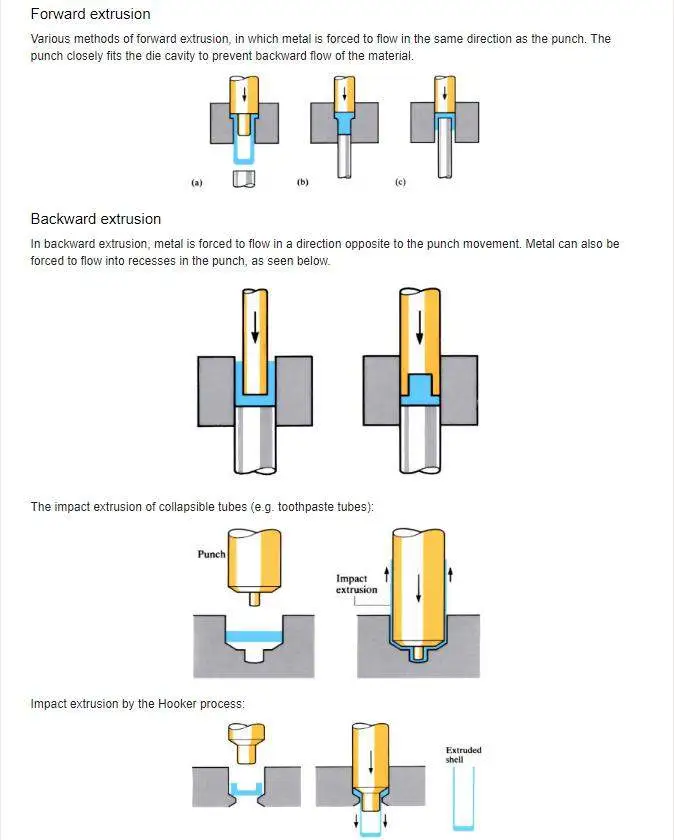Cold Forging Services

On this page
 What Is Cold Forging?
What Is Cold Forging?
Cold forging, also known as cold forming, is a manufacturing process that occurs at or near room temperature, in contrast to warm and hot forging which require higher temperatures. This process involves placing a workpiece between two dies and hammering the dies until the metal takes their shape. Due to the friction generated during the process, the temperature of the metal being forged can actually rise up to 250°C or 482°F. Cold forging has both advantages and disadvantages.What Are the Advantages of Cold Forging?
Cold forging, which does not involve preheating the metal, offers numerous advantages and is commonly employed in the automotive industry. One notable advantage is its cost-effectiveness compared to other processes as the final product typically requires minimal or no additional finishing. Additionally, there is little to no excess material left after cold forging, as the net weight of the original metal remains similar to that of the finished product. The dies utilized in cold forging also have a longer lifespan compared to those used in hotter processes, resulting in fewer replacements.Another benefit of cold forging is the significant increase in yield and tensile strength that the metal experiences, despite a decrease in its ductility during the process. Since no heating is involved, the grain structure of the metal retains its size and adjusts its direction to align with the shape changes in the workpiece, leading to enhanced strength.
What Are the Disadvantages of Cold Forging?
The primary drawback of cold forging is its limitation in usage for all types of metals, as some are more prone to cracking or breaking during the process. For instance, while certain steels can be forged at room temperature, steel varieties with a carbon content of 0.5% or higher cannot.Another disadvantage is that cold forging is restricted in terms of the shapes it can create. Typically, it is more suitable for producing basic and mass-produced shapes. If you require a custom metal piece, an alternative process may yield better results for achieving your desired outcome.
How Is Cold Forging Different from Hot Forging?
The most apparent contrast between cold and hot forging lies in the temperature used in each process. While cold forging occurs at or around room temperature, hot forging involves heating the metal above its recrystallization temperature. This temperature is generally extremely high, with steel, for instance, requiring heating to 1150°C or 2202°F, and copper alloys to 700-800°C or 1300-1470°F, which is equivalent to roughly 75% of their melting point. Such high temperatures are essential to prevent the metal from work-hardening during forging by rendering it plastic-like and much more malleable.Hot forging typically employs a technique called stamping, where the heated metal is placed in a press and squeezed between a die and a tool.
Six Common Applications of Cold Forging
● Mining industryCurrently, numerous companies are entering the mining industry, leading to an increased demand for drilling equipment parts. Among these parts, mining bits are the most sought-after. It is essential for mining bits to possess quality and durability. In this regard, the implementation of advanced cold forging technologies ensures the production of high-quality mining bits. Additionally, cold forging enables a reduced lead time in the manufacturing process. As a result, cold forging plays a crucial role in meeting the needs of the mining industry.
● Radiator sector
With the increasing reliance on electronics in modern machinery, there is a high demand for aluminum radiators. Aluminum radiators play a crucial role in dissipating excess heat generated by electronic circuits, thereby reducing the risk of damage. To meet this demand, the cold forging process is utilized in the production of aluminum radiators. Given their essentiality in various electronic devices, cold forging enables the efficient and speedy production of aluminum radiators. These radiators find wide application in LED lights, automobiles, mobile phones, computers, and numerous other electronic devices.
● Gear production
Gears are a common component found in moving machinery, including transmission equipment and automobiles. Cold forging plays a vital role in the manufacturing of gears. One of the key advantages of cold forging in gear production is the ability to produce finished products at a high manufacturing speed.
● Fastening tools production
In this modern world, mechanization has become prevalent in almost every aspect, whether it's in workplaces or homes. Machines have taken over tasks that were once performed by humans. As a result, there is a need for joining parts to assemble these machines. This is where cold forging comes into play in the production of fastening tools. Cold forging ensures the creation of high-quality, durable, and strong fastening tools. Additionally, the cold forging process is relatively fast, enabling the production of fastening tools at a high rate.
● Military sector
Military equipment requires stringent specifications, making cold forging a critical process in the manufacturing of bullets, shell casings, and other essential military hardware. The primary advantage of employing cold forging in the military industry lies in the production of high-performance and dependable parts. By utilizing low strength materials and tolerances, these components are specifically designed to meet the requirements of military weaponry.
● Hand tools
Cold forging is utilized in the manufacturing process of hand and hardware tools, including nuts, nails, rivets, and bolts. The preference for cold forging in the production of these hardware tools stems from its ability to achieve high levels of dimensional accuracy and low tolerances.
Ultimately, the selection of the process hinges on the specific product requirements and the type of metal to be employed. All forging methods have the potential to serve as effective means for reinforcing and shaping your metal workpieces into the desired end product.
Next: Hot Forging Services
Previous: Distributors
